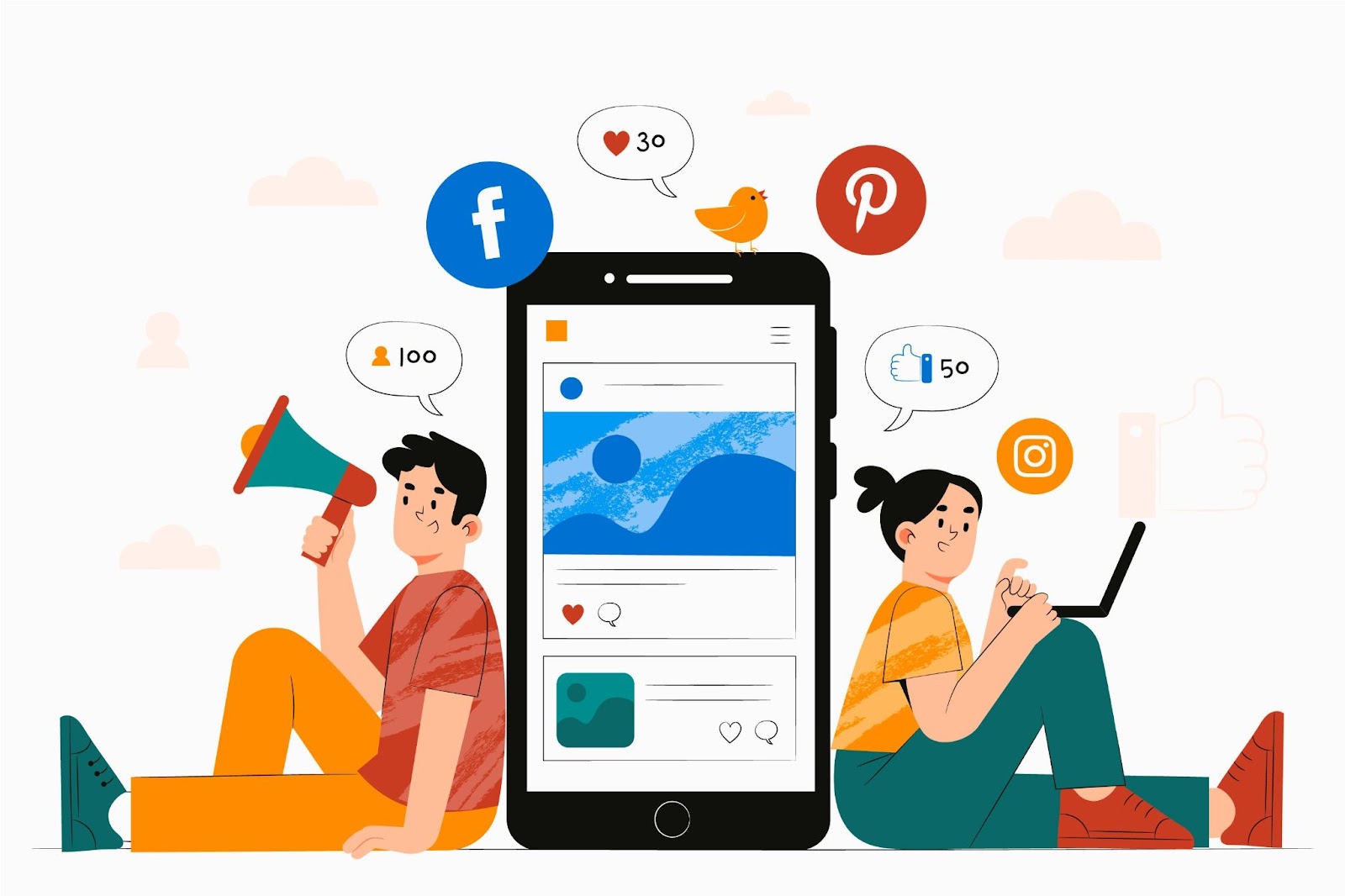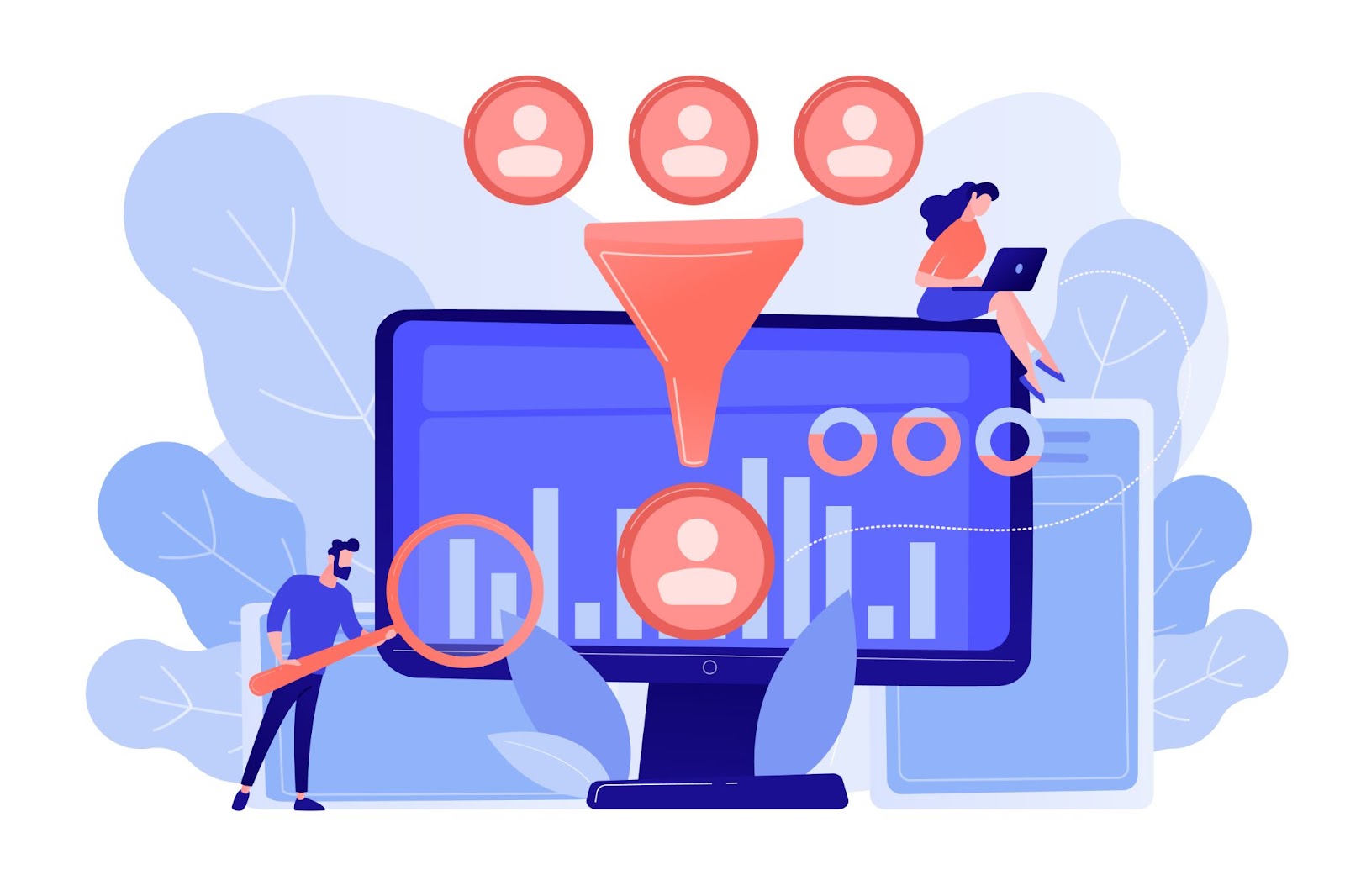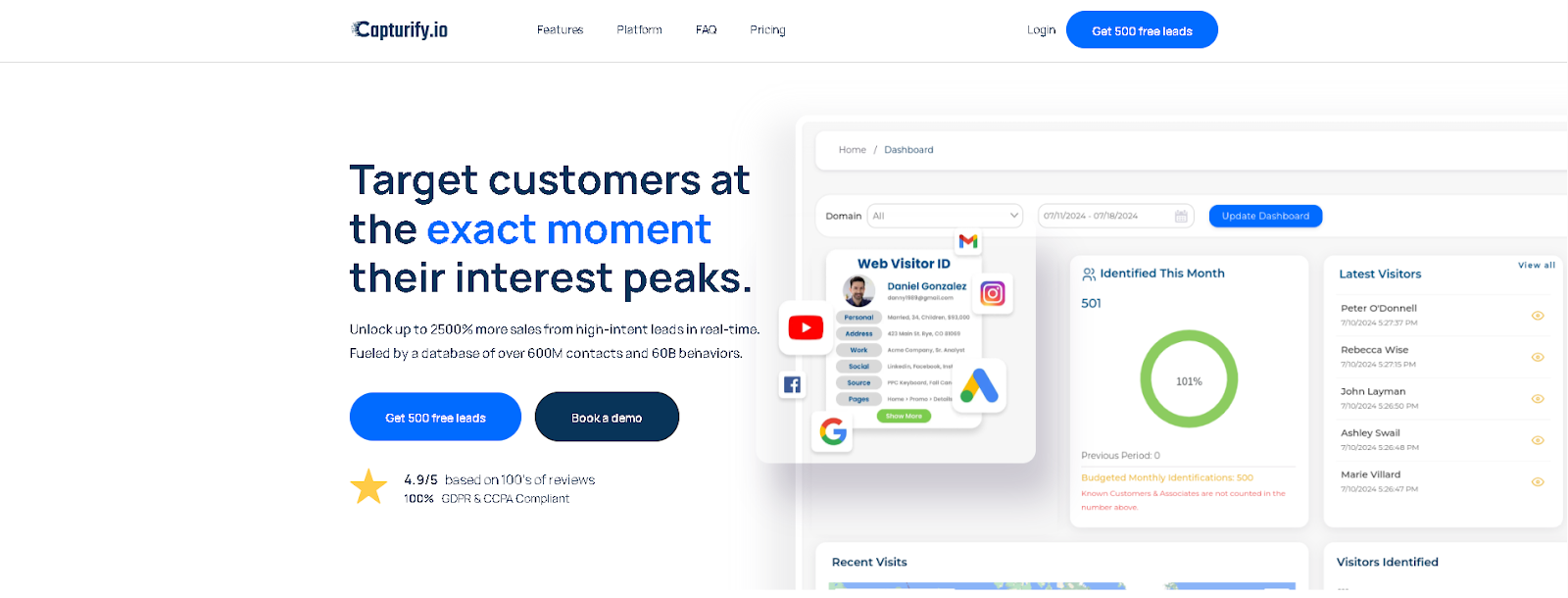If you’re still casting a wide net to fill your pipeline, you’re missing out on the leads that actually convert.
Targeted lead generation focuses your marketing efforts on attracting the right people, or those most likely to become paying customers. Instead of chasing volume, you focus on qualified leads who match your ideal customer profile (ICP) and have a genuine need for your product or service.
This approach doesn’t just improve lead quality. It also streamlines your sales process, aligns your sales and marketing team, and delivers a higher return on every campaign.
Wondering how to make it work for your brand? That's what this guide is for.
What Is Targeted Lead Generation?
Targeted lead generation is the process of attracting and engaging leads that closely match your ICP, not just anyone who clicks an ad or visits your site.
Unlike traditional lead generation that focuses on volume, this approach aims for high-quality leads that are more likely to become paying customers. These leads are identified through data, segmentation, and personalized outreach.
By aligning with your target audience’s needs and behavior, targeted lead generation strategies improve lead quality, reduce sales friction, and shorten the time from first contact to conversion.
How to Identify Targeted Leads and Build an Ideal Customer Profile
You can’t generate targeted leads without first defining who they are. That starts with developing a clear ICP and backing it up with real data.
This section breaks down how you can move from general audience targeting to precision prospecting.
1. Define Your ICP

Your ICP is a detailed representation of the buyer most likely to convert, stay loyal, and see value in your product or service. It’s the strategic starting point for every successful targeted lead generation effort, helping you focus your resources on leads that actually matter.
What You’re Actually Identifying
- The structural and behavioral traits of high-fit, high-value customers with strong lifetime value (LTV), low churn, and repeatable success stories
- The pain points your solution addresses most effectively, and who experiences them most acutely
- Decision-making patterns, buying triggers, and urgency levels that indicate a lead is ready to take action
How to Do It Well
- Analyze your best current customers, those with high retention, fast onboarding, and clear ROI, to spot common traits
- Use customer relationship management (CRM) tools and sales feedback to uncover relevant details, such as company size, buyer roles, industry vertical, and adoption challenges
- Go beyond basic firmographics. Include purchasing habits, sales cycle length, tech stack (if B2B), and success indicators like expansion potential
- Treat your ICP as a living profile and refine it continually as you gather new insights from marketing and sales activity
2. Analyze Customer and Lead Data
Defining your ICP is only the beginning. To sharpen your targeted lead generation efforts, you need to validate that profile using real-world lead and customer data. This step helps make sure you’re not just targeting based on assumptions but on patterns proven to drive conversion.
What You’re Actually Identifying
- Behavioral and performance traits that distinguish high-converting leads from low-quality ones
- Acquisition sources, like landing pages, LinkedIn ads, or referral traffic, that consistently generate qualified leads
- Actions that signal genuine buyer intent, such as demo requests, repeat visits, or lead magnet downloads
How to Do It Well
- Use CRM and sales pipeline data to assess your highest-performing customers by average deal size, time to close, and upsell potential
- Break down lead conversion by source, or which marketing strategies, platforms, or outreach efforts yield the best ROI
- Pay attention to subtle intent signals like return visits to pricing pages, interaction with social media posts, or time spent on key content
- Feed those insights back into your ICP and lead generation process so each iteration becomes more precise and effective
3. Segment Your Total Addressable Market
Your total addressable market (TAM) includes every potential customer who could benefit from your product or service. But to generate high-quality leads, you need to break that market into focused segments you can actually reach and convert.
What You’re Actually Identifying
- Subgroups within your target market that differ in goals, size, readiness, or buying behavior
- Conversion potential by vertical, company size, geography, or use case
- Buyer personas that represent the real decision-makers in each segment
How to Do It Well
- Use CRM and lead generation campaign data to identify segments with consistently strong conversion rates and short sales cycles
- Match each segment to a buyer persona that reflects unique pain points, objections, and success criteria (e.g., startup founders will differ to enterprise buyers)
- Prioritize segments by evaluating key metrics like engagement rate, deal velocity, and return on investment (ROI)
- Align your sales and marketing efforts to each segment’s characteristics with tailored messaging, landing pages, and outreach channels
4. Use Behavioral and Firmographic Filters
Once your market is segmented, the next step is identifying which leads are worth pursuing now. This is where firmographic and behavioral filters help narrow your focus to those showing strong fit and intent.
What You’re Actually Identifying
- Firmographic attributes that indicate structural fit, such as company size, revenue, industry, or geography
- Behavioral signals, like social media interactions, website behavior, and ad engagement, that reflect genuine interest or purchase readiness
- Accounts or individuals who match your ICP and are actively engaging with your brand or solution category
How to Do It Well
- Apply firmographic filters early in the lead generation process to exclude mismatches (e.g., wrong industry or budget size)
- Track behavioral intent, such as repeated visits, pricing page views, content marketing interactions, or clicks on targeted ads, using analytics tools
- Combine fit and behavior to tier leads (high-fit + high-intent = route to sales, high-fit + low-intent = nurture with drip campaigns, and low-fit + high-intent = qualify carefully)
- Use these filters to build cleaner, targeted lead lists and guide your sales and marketing team toward the right outreach strategy
5. Align Sales and Marketing on Target Criteria
Even with a clear ICP and refined lead filters, targeted lead generation can break down without strong alignment between your sales and marketing teams. Both sides need to operate from the same definition of a qualified lead and coordinate closely to convert them.
What You’re Actually Identifying
- Shared understanding of what makes a lead qualified across both teams
- Gaps between marketing efforts and sales team expectations that could lead to miscommunication or wasted outreach
- Opportunities to improve messaging, timing, and handoff processes for new leads
How to Do It Well
- Develop a mutual lead qualification framework that includes firmographic fit, behavioral signals, and readiness indicators
- Sync campaign calendars and messaging so sales can reinforce what marketing is promoting, whether through social media platforms, paid ads, or content
- Create feedback loops; have sales report on lead quality, objections, and close rates regularly to help marketing adjust targeting or offers
- Use CRM tools to give both teams visibility into lead status, activity history, and next steps to keep handoffs seamless and informed
Top Targeted Lead Generation Strategies That Work
Once your ICP is clear and your segmentation is solid, execution becomes everything. Successful targeted lead generation is about doing the right things with precision.
These proven strategies help you attract high-quality leads by focusing on relevance, intent, and alignment across your marketing and sales efforts.
Run Paid Ads With Intent and Precision
Paid ads are only as effective as the targeting behind them.
To generate qualified leads, campaigns must focus on buyer intent and real-time behavior, not just broad website visitor demographics. Successful ads lead to tailored landing pages and align with where the prospect is in their journey.
Instead of driving traffic for the sake of visibility, your sales and marketing team should treat ads as tools to surface the right people at the right time.
Use Social Media to Engage and Qualify
Social media can surface targeted leads quickly when you use it to listen, not just broadcast. Engaging posts, outreach, and platform-specific ads (like LinkedIn ads) help you identify who’s actively interested.
You’re not just building brand awareness, you’re watching how potential customers engage with your content, which topics they care about, and when they’re most likely to convert. That insight informs better targeting and outreach.

Create Landing Pages That Convert on Relevance
Every campaign should send leads to a landing page built for their specific interests or stage in the funnel. Generic messaging won’t convert targeted prospects; relevance will.
A strong page addresses the pain point, offers a specific value proposition, and uses design and copy to guide action. It also acts as a qualification tool, revealing which visitors are serious based on form fills, scroll depth, and engagement behavior.
Use Lead Magnets That Signal True Intent
Lead magnets should help identify intent, not just collect emails.
To generate targeted sales leads, your offer needs to be aligned with the user’s current need. For example, educational content works for early interest. Calculators, comparison tools, or pricing guides attract mid- and late-stage buyers.
The key is mapping the magnet to buying intent, then using engagement data to trigger next steps. When done right, lead magnets pre-qualify leads before they ever talk to sales.
How to Launch a Targeted Lead Generation Campaign
Launching an effective targeted lead generation campaign is about reaching the right ones. That requires a disciplined approach rooted in your ICP, enriched with data, and executed across channels your target audience already trusts.
Here’s how to move from planning to execution with focus and precision.

1. Start With a Clean, Verified Lead List
Your campaign is only as strong as the leads you reach. If your list is outdated, mismatched, or bloated, your entire lead generation strategy will underperform, no matter how refined your messaging or funnel is.
Why List Quality Impacts Results
Even with a solid ICP, poor list quality breaks campaigns.
Sending ads, emails, or outreach to the wrong people leads to wasted spend, unsubscribes, and missed opportunities. But a clean, verified list makes sure your sales team is reaching high-quality leads who match your target market and are more likely to convert.
Where to Source Targeted Leads
Use tools that allow you to filter leads based on fit and intent, including:
- Sales intelligence tools like Capturify
- LinkedIn search and ads for role-based targeting
- Intent-based platforms to reveal anonymous website visitors
- CRM data enrichment tools to fill in missing firmographics or engagement history
Avoid scraping or buying generic databases, as they dilute your lead generation efforts and often violate compliance standards.
How to Clean and Validate Your Data
Before loading contacts into your CRM or sending outreach, make sure to remove duplicates and stale entries, as well as verify emails and phone numbers.
You also need to validate the relevance of your leads and assess whether they match your lead base and product or service focus. Also, tag contacts with funnel stage or engagement history to support data personalization.
List quality is more important than volume. A small, well-verified list of targeted leads outperforms a large, noisy one every time.
How to Segment for Campaign Precision
A great list isn’t just clean. It’s also segmented.
Divide your target audience based on funnel stage (awareness, consideration, decision), job role or company size for B2B, behavior (e.g., landing page visits, social engagement, downloads), and industry or use case relevance.
This segmentation enables targeted lead generation campaigns that speak directly to the priorities of each group, which produces higher engagement and better lead quality.
Build a Feedback Loop With Sales
Once campaigns go live, revisit list performance weekly or biweekly. Collaborate with your sales team to assess which segments are converting, whether certain lead sources are outperforming others, and if any data is outdated or misaligned.
These insights help you refine future lists, reduce sales funnel leakage, and consistently generate more targeted leads with every campaign cycle.
2. Build a Campaign Around One Clear Offer
A targeted lead generation campaign needs a focused, irresistible reason to engage. That’s where your core offer comes in.
Whether it’s a free trial, a downloadable resource, or a personalized demo, the offer should directly solve a pain point for your ideal customers and guide them toward the next step in your sales funnel.
Why Focused Offers Drive Conversions
Targeted leads don’t respond to vague messaging. If your campaign tries to appeal to everyone with broad benefits, it’ll resonate with no one.
An effective campaign centers around a single value-driven offer tailored to a specific segment, making your outreach feel relevant and compelling. This leads to higher-quality leads and more efficient lead generation.
How to Craft a High-Performing Offer
Your offer should align with both what your target audience wants and what your product or service solves. A good offer is:
- Specific: "Free 15-minute audit for ecommerce conversion" beats "Let’s chat."
- Actionable: Offers should move leads one step closer to conversion.
- Low-friction: Minimize commitment (time, money, effort) to increase opt-ins.
- Segment-aligned: Tailor it to the persona; don’t show enterprise buyers a startup guide.
Use landing pages to frame your offer clearly, reinforce value, and drive action. Everything from your social media marketing to outbound emails should support this single offer.
Align Messaging Across All Channels
To generate highly targeted leads, your offer needs consistent framing across every touchpoint.
For social media platforms, use short-form content to tease value, and for cold emails, make sure that you highlight the offer early, focusing on solving a specific pain.
Match copy and visuals to the offer's landing page for paid ads, and when using lead magnets, support the offer with helpful content that builds trust.
This cohesion makes sure every interaction reinforces your campaign objective, turning attention into conversions.
3. Use the Right Channels for Your Audience
To generate truly targeted leads, your outreach must meet potential buyers where they’re already active.
That doesn’t mean using every channel. It means using the right ones for your target market.
Why Channel Fit Impacts Lead Quality
If your targeted lead generation campaign runs on the wrong platforms, even the best messaging will miss.
Your ideal customers aren’t spread evenly across the internet. They cluster around certain platforms, habits, and formats. Channel misalignment leads to wasted spend and attracts unqualified or uninterested potential customers.
How to Select the Right Lead Generation Channels
Start with audience behavior: do they prefer visual content on social media platforms, or direct outreach via email or cold calling? Are they likely to engage with social media marketing or respond better to a webinar invitation?
Choose channels where you’ve seen engagement from existing customers, and match the format to the product or service you’re promoting.
What Channel Precision Unlocks
When your campaigns run on the right channels, you don’t just get more reach. You also get business leads who are warmer, more responsive, and further along in their buying process.
The result is a targeted lead base that converts faster and more often, creating a smoother path through the sales funnel.
4. Optimize for Conversion at Every Step
Attracting targeted leads is only half the battle. To make your lead generation strategy work, you need to convert interest into action consistently.
Why Conversion Readiness Matters
Even the most highly targeted leads won’t convert if your funnel is leaky.
If your messaging isn’t aligned, your forms ask too much, or your page loads too slowly, you’ll lose potential customers at the moment of decision. Every friction point between interest and action lowers the value of your targeted lead generation efforts.
How to Improve Each Stage of the Funnel
Your landing pages must be fast, mobile-optimized, and clearly focused on the next step. Messaging should reflect the specific offer or channel that brought a visitor there.
Use clear call to actions (CTAs), pre-filled forms when possible, and trust indicators to boost credibility. You should also match the page content to the targeted marketing campaigns that generated the visit for higher continuity.
What Conversion Optimization Enables
By refining the conversion experience, you transform traffic into qualified leads, not just clicks.
You reduce bounce, increase lead volume without increasing spend, and make sure your sales team receives leads who’ve already taken meaningful action, setting the stage for smoother handoff and better close rates.
5. Qualify and Prioritize Leads Before Sales Outreach
Not every lead deserves a call from your sales team. Prioritization makes sure you engage the right people, at the right time, with the right message.
Why Lead Prioritization Is Critical
Even in a strong targeted lead generation campaign, not all potential leads are equally ready to buy. Some need nurturing, others need a fast response.
Without clear prioritization, your team wastes time on low-fit contacts while high-intent targeted leads go cold.
How to Score and Qualify Targeted Leads
Implement a lead scoring system that blends firmographics (company size, role, industry) with behavior (pages visited, offers downloaded). Score higher for repeat actions, urgency signals, or alignment with your product or service.
This helps you sort business leads into sales-ready, nurture, or disqualify buckets based on actual buying signals, not guesswork.
What Smart Qualification Delivers
You’ll deliver more targeted leads to your team: ones who are prepped, primed, and aligned with your target market.
This leads to shorter cycles, more personalized outreach, and lead generation that reliably produces revenue, not just contacts.
6. Test, Measure, and Improve Every Campaign
Even the most strategic targeted lead generation campaign needs refining. Optimization isn’t a one-time task. It’s how you make sure every effort performs better than the last.
Why Testing Is Essential to Lead Generation
Your target market evolves. Platforms change. Messaging that worked last quarter might underperform now.
Without testing, you rely on instinct, not insight, and miss opportunities to improve your lead generation process. Every element you launch should be treated as a hypothesis, not a certainty.
What to Measure and Why
Track performance across the entire sales funnel, from impressions and clicks to qualifying leads and conversions. Key metrics include cost per lead, landing page bounce rates, and lead-to-customer ratio.
If a channel brings in new leads but not quality leads, it’s time to rethink your approach. Use these insights to sharpen targeting, tweak creative ideas, and recalibrate expectations.
What Ongoing Optimization Unlocks
Iterative improvement helps you generate highly targeted leads more efficiently over time. It sees to it that your lead generation strategies evolve with your audience and sharpen your focus on ideal customers who are most likely to convert.
Ultimately, it builds a targeted lead base that drives scalable, repeatable growth.
Turn Website Visitors Into Leads With Capturify

Traditional lead generation often focuses on quantity, reaching a broad audience and hoping for conversions. But this method wastes time and ad spend on unqualified traffic. What you need is a way to generate targeted leads with precision.
That's where Capturify shines.
Capturify helps you generate targeted business leads and individual consumers by revealing anonymous website visitors in real time.
For B2B brands, it shows which companies are engaging and builds a targeted lead list. For B2C companies, it captures behavioral insights so you can follow up with high-intent individuals based on interest and activity.
Whether you’re generating leads from paid traffic, organic search, or cold calling, Capturify lets you see who’s interested before they fill out a form.
That means fewer missed opportunities, more potential customers, and a lead funnel that produces higher-quality leads on autopilot.
Get started with 500 free leads today!
FAQs About Targeted Lead Generation
What is the lead generation target?
The lead generation target refers to the specific type of potential customers a business wants to attract, typically those who are most likely to benefit from its product or service. Instead of casting a wide net, the goal is to generate targeted leads that closely match your ideal buyer profile.
What is lead targeting?
Targeting a lead means identifying and pursuing potential leads based on pre-defined criteria like demographics, behaviors, industry, or purchase intent. It’s about narrowing your outreach to those with the highest likelihood of conversion to make sure your lead generation efforts are effective.
How to generate targeted leads?
To generate targeted leads, start with a clear understanding of your ideal customer.
Use data to segment your audience, personalize your messaging, and focus on outreach strategies like targeted marketing campaigns, SEO, or identity resolution tools like Capturify that identify website visitors most likely to become customers.
This approach helps avoid a broad audience and focuses only on contacts with real buying potential.
What is targeted B2B lead generation?
Targeted B2B lead generation is the process of generating targeted business leads within a specific industry or business segment. It involves building a strategy that prioritizes qualified companies or decision-makers, rather than pursuing any available contact.
The result is a targeted lead list filled with high-value prospects, which is ideal for scaling outreach without wasting resources on irrelevant accounts.






.avif)